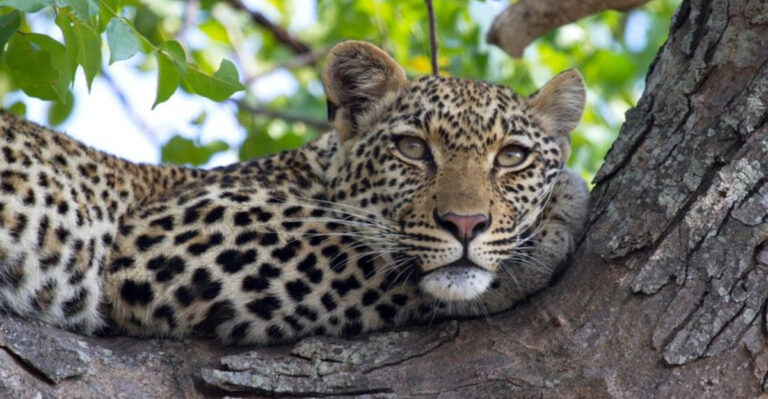13 Places To Spot Elk Across America
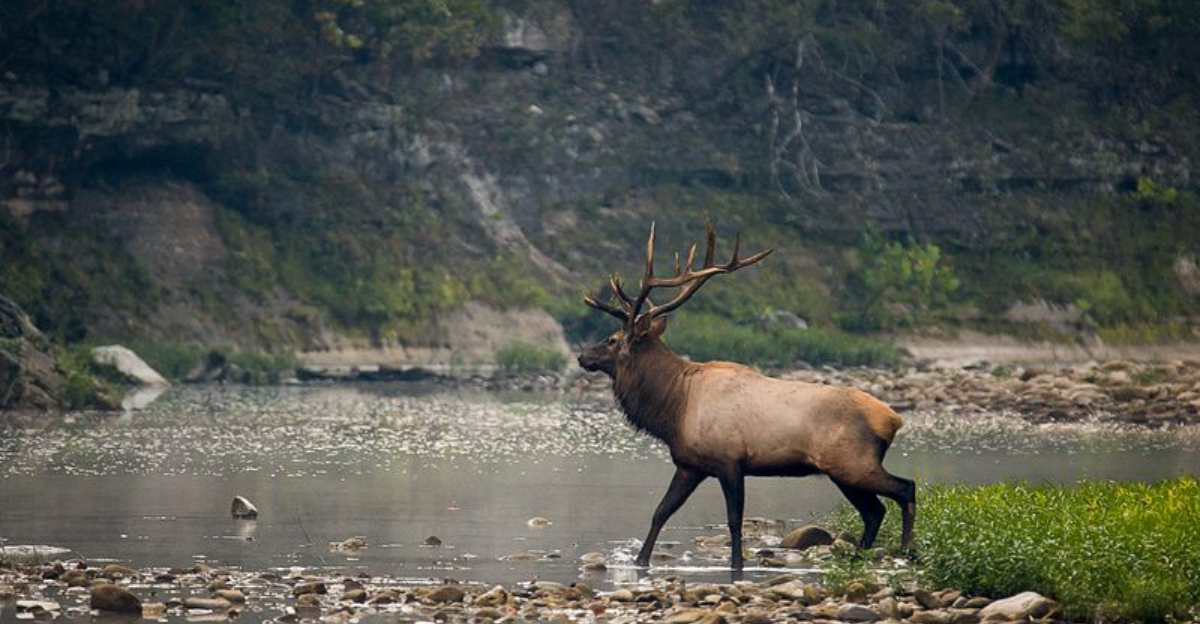
Ready for a wildlife adventure? Elk are some of North America’s most majestic creatures, standing tall with impressive antlers and graceful movements.
These magnificent animals roam across diverse landscapes from mountains to meadows, giving wildlife enthusiasts plenty of opportunities to witness them in their natural habitat. Grab your binoculars and camera as we explore the best places to spot these incredible creatures across America.
1. Rocky Mountain National Park, Colorado

Fall brings the famous elk rut to this mountain paradise. Bull elk bugle loudly across meadows, calling to potential mates and challenging rivals in dramatic showdowns.
Moraine Park and Horseshoe Park offer front-row seats to this wild performance. Visit at dawn or dusk for best viewing chances, when these massive creatures emerge from forest edges to graze.
2. Yellowstone National Park, Wyoming
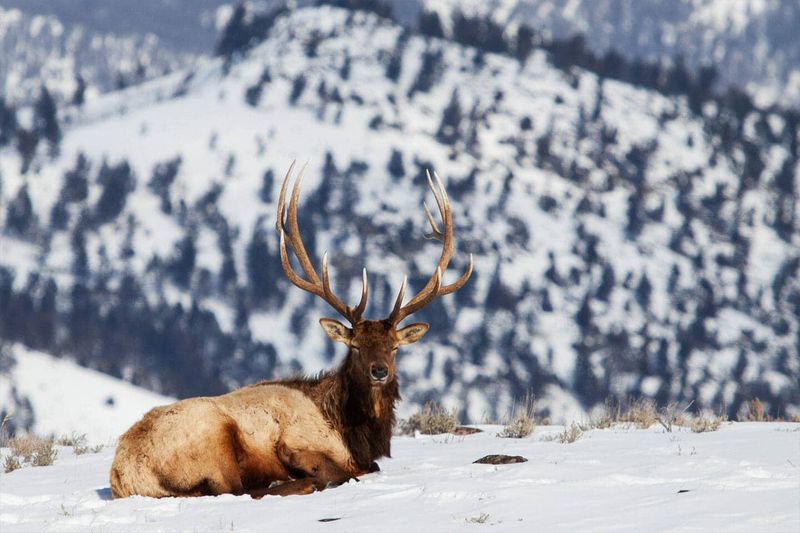
America’s first national park hosts thousands of elk roaming its vast wilderness. The Lamar Valley, nicknamed ‘America’s Serengeti,’ offers spectacular viewing opportunities year-round.
Winter creates a dramatic backdrop as elk navigate snow-covered landscapes. Summer brings newborn calves, with protective mothers keeping watchful eyes on their spotted offspring among the lush meadows.
3. Great Smoky Mountains National Park, Tennessee/North Carolina

Mist hangs over the valleys where reintroduced elk now thrive after being absent for 150 years. The Cataloochee Valley serves as their sanctuary, where historic buildings create a picturesque backdrop for wildlife watching.
Rangers lead educational programs about these magnificent animals and their successful comeback story. Early morning visits reward patient observers with intimate glimpses of elk families.
4. Wind Cave National Park, South Dakota
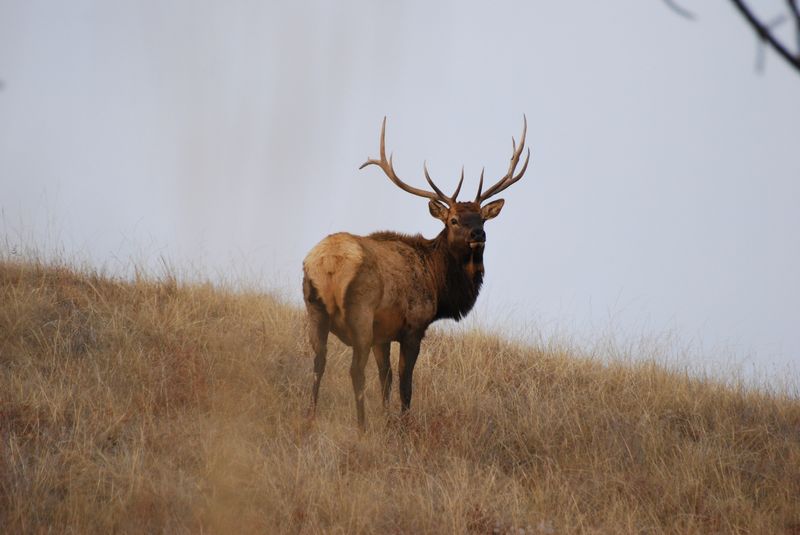
Beyond its famous underground labyrinth lies a prairie paradise where elk roam freely. The rolling mixed-grass prairie provides perfect grazing grounds for these majestic creatures.
Drive the park’s scenic roads during golden hour when elk emerge from forested areas. The contrast of dark elk against golden prairie grasses creates postcard-perfect photo opportunities for wildlife photographers.
5. Olympic National Park, Washington

Rainforest elk, known as Roosevelt elk, reign in this diverse ecosystem. Named after President Theodore Roosevelt, these are the largest elk subspecies in North America.
The Hoh Rain Forest and Quinault Valley offer prime viewing spots. Watch these massive creatures navigate moss-draped forests and lush river valleys. Their dark brown coats blend perfectly with the emerald landscapes of this temperate rainforest.
6. Redwood National and State Parks, California
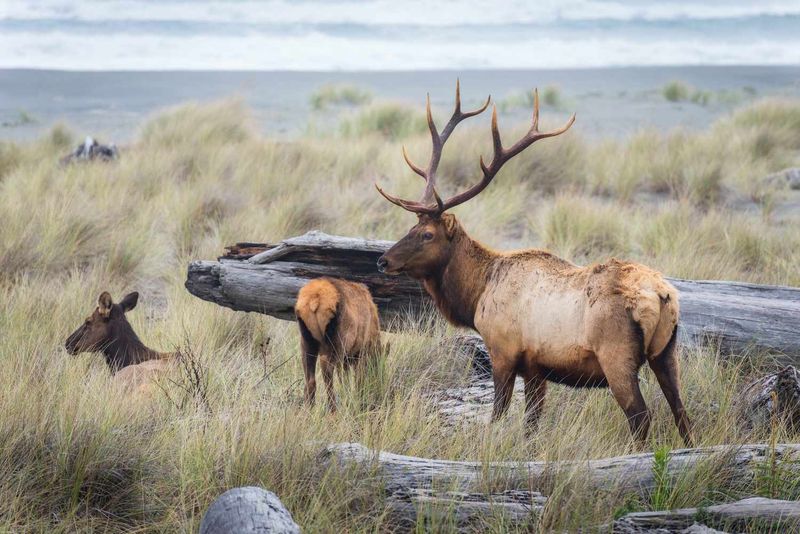
Ancient trees tower above grazing Roosevelt elk in this coastal wonderland. The Prairie Creek area offers almost guaranteed sightings, with resident herds often visible from park roads.
Gold Bluffs Beach creates a surreal setting where elk sometimes wander onto coastal sands. Few wildlife experiences match watching these woodland creatures against a backdrop of crashing waves and the world’s tallest trees.
7. Grand Teton National Park, Wyoming
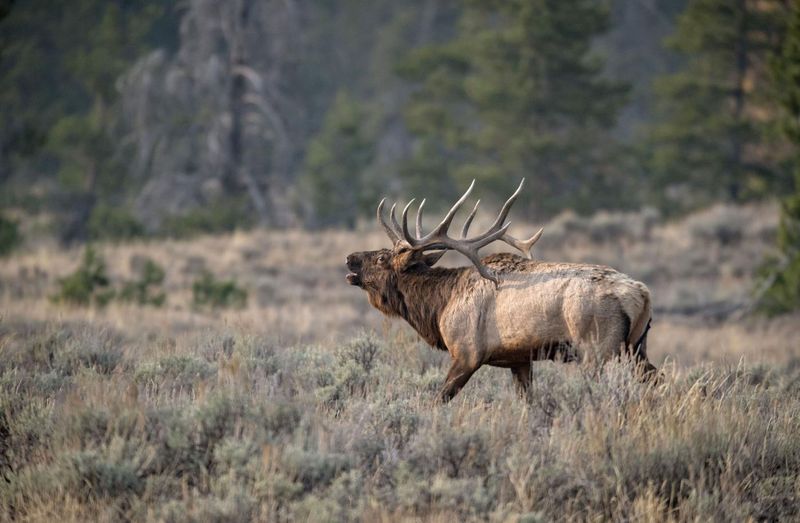
Jagged mountain peaks create a dramatic backdrop for elk watching in this photographer’s paradise. The National Elk Refuge sits just outside the park, hosting thousands of wintering elk.
Fall brings the elk rut, when bull elk battle for dominance. Their haunting bugles echo across sage-covered valleys while the Teton Range looms majestically behind them, creating one of North America’s most iconic wildlife scenes.
8. Pennsylvania Elk Country, Benezette
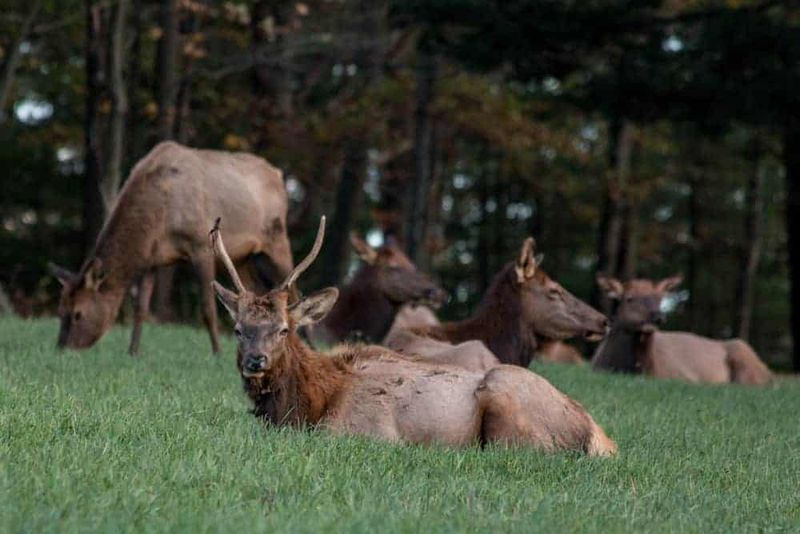
Eastern elk once disappeared from Pennsylvania, but successful reintroduction has created a thriving population. The Elk Country Visitor Center offers educational exhibits and viewing platforms overlooking prime habitat.
September and October bring the dramatic rut season. Winslow Hill provides excellent roadside viewing opportunities where families can safely watch these impressive animals from their vehicles.
9. Theodore Roosevelt National Park, North Dakota
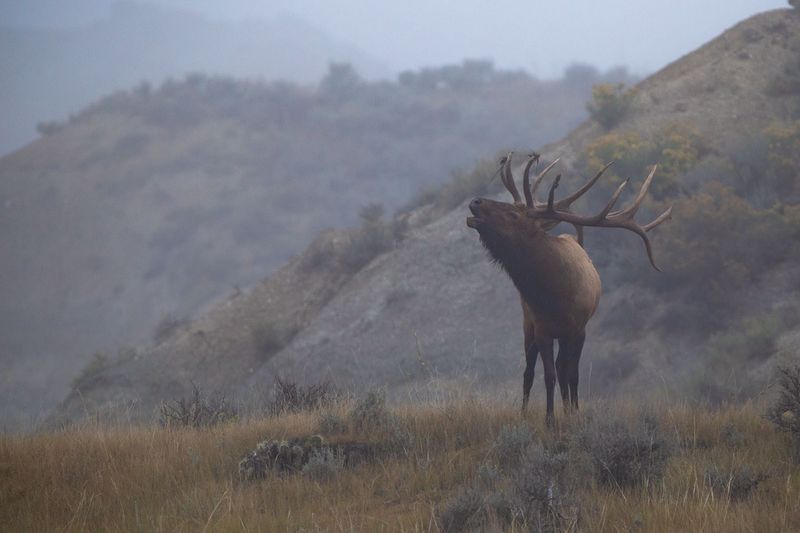
Badlands buttes and painted canyons provide sanctuary for reintroduced elk herds. The park’s North Unit offers the best viewing opportunities, with fewer crowds than many famous elk destinations.
Sunrise illuminates these colorful landscapes as elk graze along river bottoms. The Little Missouri River creates a green ribbon through this rugged terrain, attracting wildlife and providing visitors with scenic driving loops for spotting elk.
10. Wichita Mountains Wildlife Refuge, Oklahoma
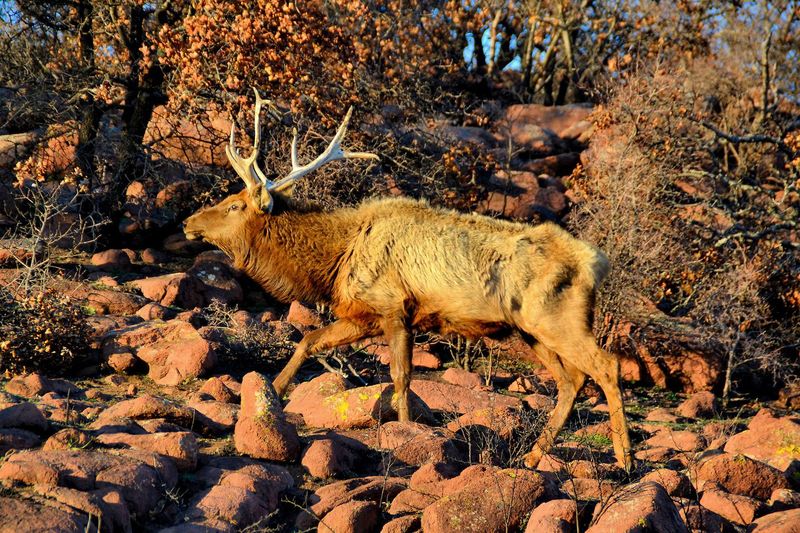
Ancient granite mountains rise unexpectedly from Oklahoma’s plains, creating unique elk habitat. This refuge helped save elk from extinction in the early 1900s through conservation efforts.
The Mount Scott area offers excellent viewing opportunities. Guided tours take visitors through remote sections of the refuge where elk herds roam freely alongside bison and longhorn cattle in this living testament to wildlife restoration.
11. Land Between the Lakes, Kentucky/Tennessee
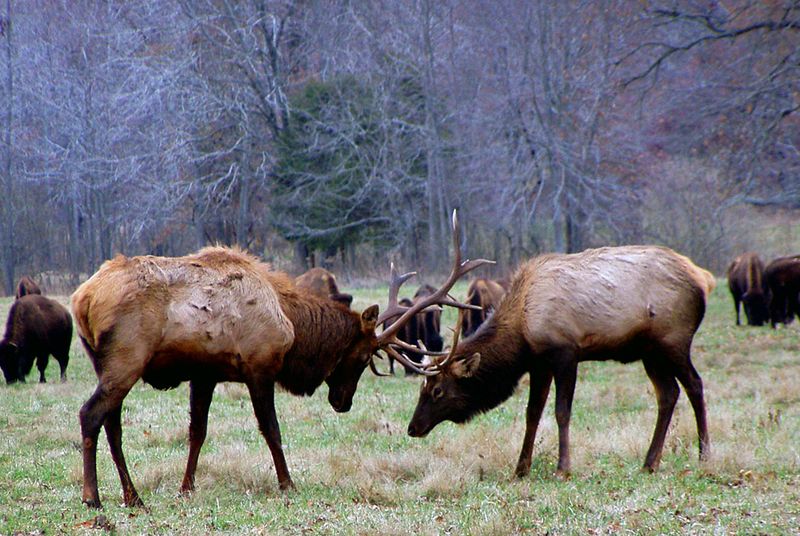
Between Kentucky Lake and Lake Barkley lies a 170,000-acre recreation area where elk were successfully reintroduced. The Elk & Bison Prairie features a 3.5-mile driving loop through restored native grassland.
For guaranteed sightings, visit at dawn when elk are most active. This accessible viewing area makes wildlife watching possible for visitors of all ages and abilities, with convenient pull-offs for photography.
12. Valles Caldera National Preserve, New Mexico

Volcanic history created this massive meadow-filled caldera where elk thrive. The preserve’s high elevation meadows attract hundreds of elk, especially during summer months.
Evening brings elk from forested edges into open grasslands. The vast circular valley, formed by an ancient collapsed volcano, creates a natural amphitheater for wildlife viewing against a backdrop of the Jemez Mountains.
13. Boxley Valley, Arkansas
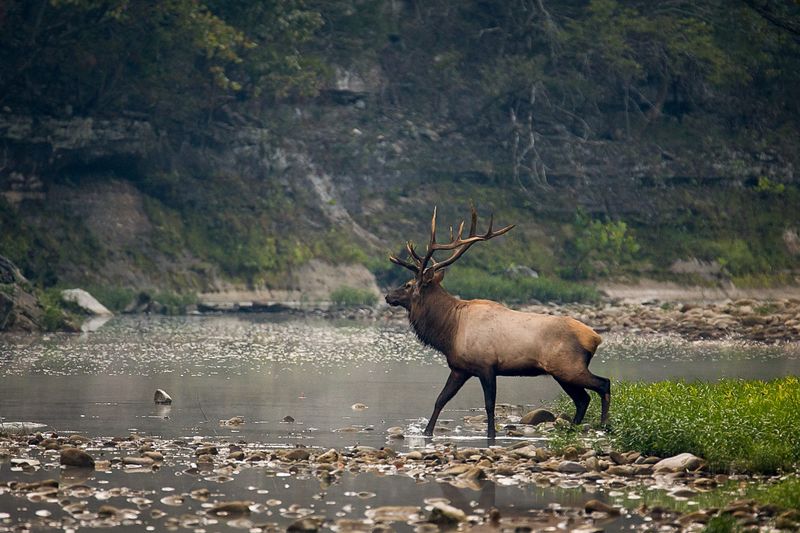
Morning fog drifts through this historic Ozark valley where elk were reintroduced in the 1980s. The Buffalo National River corridor provides perfect habitat with its mix of open fields and forest edges.
Historic barns and homesteads dot the landscape, creating a photographer’s dream setting. Local residents have embraced their elk neighbors, making this one of the most accessible and peaceful places to observe these magnificent animals in the eastern United States.


